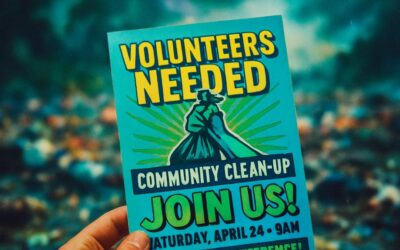Introduction
Welcome back to our error correction and self-editing practice! Today, we’re focusing on the important topic of language revitalization and how it connects to preserving our shared heritage. As always, the key to improvement lies in your active participation. So, take a deep breath, read the flawed piece of writing below, and try your best to identify and correct the errors using the checklist as your guide. Only then should you compare your work with our detailed corrections and explanations. Let’s get started!
Flawed Piece of Writing
Language is more than just a tool for communication; its a fundamental aspect of culture and identity. When a language is lost, a whole world of knowledge, traditions, and unique ways of thinking can disappear with it. This is why language revitalization and heritage preservation are so important, especially in our increasingly globalized world. Many indigenous and minority languages are facing extinction, and efforts to revive them are crucial for maintaining cultural diversity and ensuring that these rich heritages are not forgoten.
One of the main challenge in language revitalization is the lack of speakers. Often, younger generations are not learning the traditional language of their community, preferring to use more widely spoken languages for education, work, and social interaction. This can lead to a situation where the last remaining speakers are elderly, and the language is no longer being passed down to new generations. In this case, its vital to create opportunities for younger people to learn and use the language, such as through school programs, community initiatives, and family language nests.
Another important aspect of language revitalization is the documentation and preservation of linguistic heritage. This can involve recording the language, creating dictionaries and grammars, and archiving traditional stories and oral histories. This work is essential not only for future generations of speakers but also for researchers and linguists who study language diversity. Without proper documentation, a language can be lost forever, leaving behind only fragments of its once vibrant existence.
Technology can also play a significant role in language revitalization efforts. The internet, mobile apps, and multimedia resources can provide new and engaging ways for people to learn and interact with endangered languages. Online communities can connect speakers from around the world, creating virtual spaces for language use and cultural exchange. However, technology alone is not enough; it needs to be combined with community support and a strong commitment to language revival.
The benefits of language revitalization are numerous. Preserving indigenous and minority languages helps to maintain cultural diversity, which is as important for the health of our planet as biodiversity. It also strengthens the sense of identity and belonging for communities, fostering pride in their heritage and promoting social cohesion. Furthermore, language revitalization can provide valuable insights into human history, cognition, and the diversity of human thought.
In conclusion, language revitalization and heritage preservation are critical endeavors in our modern world. They require a multifaceted approach that involves community engagement, government support, linguistic documentation, and the innovative use of technology. By working together, we can ensure that the rich tapestry of human languages continues to thrive for generations to come. Its a effort that benefits all of humanity, preserving not just words but entire ways of seeing and understanding the world.
Your Editing Task
Now it’s your turn to be the editor! Carefully read the flawed piece of writing above and use the following checklist to guide your editing process. Remember to try correcting the errors on your own before comparing your work with our corrected version and detailed explanations.
Editing Checklist
- Grammar: Subject-verb agreement, tense usage, pronoun usage, articles.
- Spelling: Misspelled words.
- Punctuation: Commas, periods, apostrophes, capitalization, etc.
- Vocabulary: Appropriate word choices.
- Sentence Structure: Clarity, conciseness, run-on sentences, fragments.
- Paragraph Structure: Topic sentences, logical flow.
- Word Choice and Tone: Academic appropriateness, consistency.
- Clarity and Conciseness: Easy to understand, unnecessary words.
- Flow and Cohesion: Smooth connections, transition words.
Happy editing!
Corrected and Edited Version with Explanations
Language is more than just a tool for communication; it’s a fundamental aspect of culture and identity. When a language is lost, a whole world of knowledge, traditions, and unique ways of thinking can disappear with it. This is why language revitalization and heritage preservation are so important, especially in our increasingly globalized world. Many indigenous and minority languages are facing extinction, and efforts to revive them are crucial for maintaining cultural diversity and ensuring that these rich heritages are not forgotten.
- Correction: “its” changed to “it’s.”
- Explanation: Punctuation error. “It’s” is a contraction of “it is.” “Its” is a possessive pronoun. (Necessary correction for grammatical accuracy.
- Correction: “forgoten” changed to “forgotten.”
- Explanation: Spelling error. The correct past participle of “forget” is “forgotten.”
One of the main challenges in language revitalization is the lack of speakers. Often, younger generations are not learning the traditional language of their community, preferring to use more widely spoken languages for education, work, and social interaction. This can lead to a situation where the last remaining speakers are elderly, and the language is no longer being passed down to new generations. In this case, it’s vital to create opportunities for younger people to learn and use the language, such as through school programs, community initiatives, and family language nests.
- Correction: “challenge” changed to “challenges.”
- Explanation: Vocabulary error/Subject-verb agreement. “One of the main challenges” requires a plural noun.
- Correction: “its” changed to “it’s.”
- Explanation: Punctuation error. “It’s” is a contraction of “it is.” “Its” is a possessive pronoun. (Necessary correction for grammatical accuracy.
Another important aspect of language revitalization is the documentation and preservation of linguistic heritage. This can involve recording the language, creating dictionaries and grammars, and archiving traditional stories and oral histories. This work is essential not only for future generations of speakers but also for researchers and linguists who study language diversity. Without proper documentation, a language can be lost forever, leaving behind only fragments of its once vibrant existence.
Technology can also play a significant role in language revitalization efforts. The internet, mobile apps, and multimedia resources can provide new and engaging ways for people to learn and interact with endangered languages. Online communities can connect speakers from around the world, creating virtual spaces for language use and cultural exchange. However, technology alone is not enough; it needs to be combined with community support and a strong commitment to language revival.
The benefits of language revitalization are numerous. Preserving indigenous and minority languages helps to maintain cultural diversity, which is as important for the health of our planet as biodiversity. It also strengthens the sense of identity and belonging for communities, fostering pride in their heritage and promoting social cohesion. Furthermore, language revitalization can provide valuable insights into human history, cognition, and the diversity of human thought.
In conclusion, language revitalization and heritage preservation are critical endeavors in our modern world. They require a multifaceted approach that involves community engagement, government support, linguistic documentation, and the innovative use of technology. By working together, we can ensure that the rich tapestry of human languages continues to thrive for generations to come. It’s an effort that benefits all of humanity, preserving not just words but entire ways of seeing and understanding the world.
- Correction: “Its” changed to “It’s.”
- Explanation: Punctuation error. “It’s” is a contraction of “it is.” “Its” is a possessive pronoun. (Necessary correction for grammatical accuracy.
- Correction: “a effort” changed to “an effort.”
- Explanation: Article error. “Effort” starts with a vowel sound, so the indefinite article “an” should be used instead of “a.” (Necessary correction for grammatical accuracy.
Assignment
Edit the following piece of writing, paying close attention to the types of errors we’ve discussed in this lesson. Use the checklist provided earlier as your guide.
The decline of a language is a serious issue with far-reaching consequence for the communities that speak it. When a language fades, it often takes with it unique cultural practices, historical knowledge, and ways of understanding the world that are irreplacable. Language revitalization efforts aims to prevent this loss, working to ensure that endangered languages continue to be spoken and passed on to future generations. This work is not just about preserving words; its about safeguarding a peoples identity and heritage.
One of the key step in language revitalization is raising awareness about the importance of linguistic diversity. Many people may not realize the value of maintaining less widely spoken languages, especially in a world where English and other major languages dominate. Educating communities about the cultural, intellectual, and social benefits of multilingualism can help to garner support for revitalization initiatives. This can involve campaigns in schools, public events, and media outreach.
Another crucial element is creating resources for language learners. This includes developing curriculum, training teachers, and producing materials such as textbooks, dictionaries, and multimedia content. Making the language accessible and engaging for learners of all ages is essential for fostering a new generation of speakers. Technology can play a vital role in this area, offering innovative tools and platforms for language learning and practice.
Community involvement is also paramount for successful language revitalization. Efforts that are driven by the speakers themselves are more likely to be sustainable and effective. This can involve creating community language nests, where young children are immersed in the language from an early age, organizing language camps and workshops, and promoting the use of the language in everyday social interactions. The support and enthusiasm of the community is what truly breathes new life into a language.
However, language revitalization face many obstacles. Lack of funding, limited resources, and social pressures to use dominant languages can all hinder progress. Its important for governments and organizations to provide adequate support for these efforts, recognizing the intrinsic value of linguistic diversity and the importance of preserving our shared human heritage. The effort to revitalize a language is a long-term commitment that requires dedication, collaboration, and a deep respect for the cultural significance of language.
In conclusion, language revitalization and heritage preservation are vital for ensuring a rich and diverse future for humanity. By supporting these efforts, we can help to keep alive the unique voices and perspectives that are embodied in the worlds many languages. Its a work of love and dedication, but one that is essential for safeguarding our collective cultural inheritance.
Corrected and Edited Version of the Assignment
The decline of a language is a serious issue with far-reaching consequences for the communities that speak it. When a language fades, it often takes with it unique cultural practices, historical knowledge, and ways of understanding the world that are irreplaceable. Language revitalization efforts aim to prevent this loss, working to ensure that endangered languages continue to be spoken and passed on to future generations. This work is not just about preserving words; it’s about safeguarding a people’s identity and heritage.
One of the key steps in language revitalization is raising awareness about the importance of linguistic diversity. Many people may not realize the value of maintaining less widely spoken languages, especially in a world where English and other major languages dominate. Educating communities about the cultural, intellectual, and social benefits of multilingualism can help to garner support for revitalization initiatives. This can involve campaigns in schools, public events, and media outreach.
Another crucial element is creating resources for language learners. This includes developing curricula, training teachers, and producing materials such as textbooks, dictionaries, and multimedia content. Making the language accessible and engaging for learners of all ages is essential for fostering a new generation of speakers. Technology can play a vital role in this area, offering innovative tools and platforms for language learning and practice.
Community involvement is also paramount for successful language revitalization. Efforts that are driven by the speakers themselves are more likely to be sustainable and effective. This can involve creating community language nests, where young children are immersed in the language from an early age, organizing language camps and workshops, and promoting the use of the language in everyday social interactions. The support and enthusiasm of the community is what truly breathes new life into a language.
However, language revitalization faces many obstacles. Lack of funding, limited resources, and social pressures to use dominant languages can all hinder progress. It’s important for governments and organizations to provide adequate support for these efforts, recognizing the intrinsic value of linguistic diversity and the importance of preserving our shared human heritage. The effort to revitalize a language is a long-term commitment that requires dedication, collaboration, and a deep respect for the cultural significance of language.
In conclusion, language revitalization and heritage preservation are vital for ensuring a rich and diverse future for humanity. By supporting these efforts, we can help to keep alive the unique voices and perspectives that are embodied in the world’s many languages. It’s a work of love and dedication, but one that is essential for safeguarding our collective cultural inheritance.










0 Comments